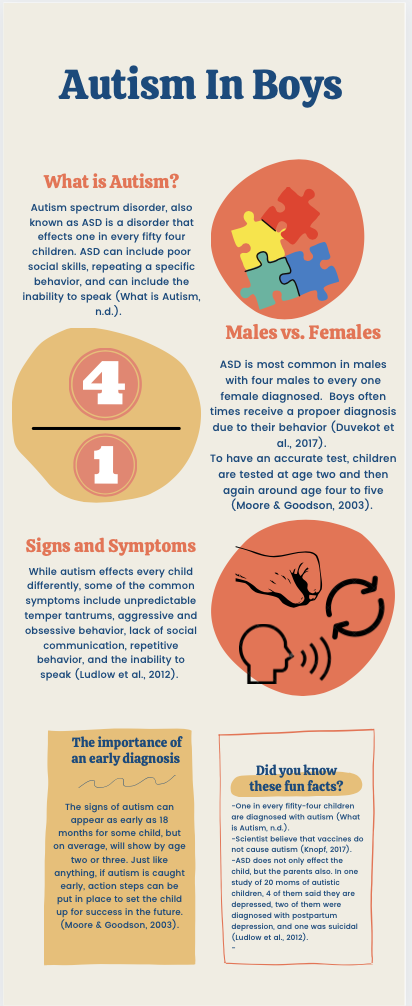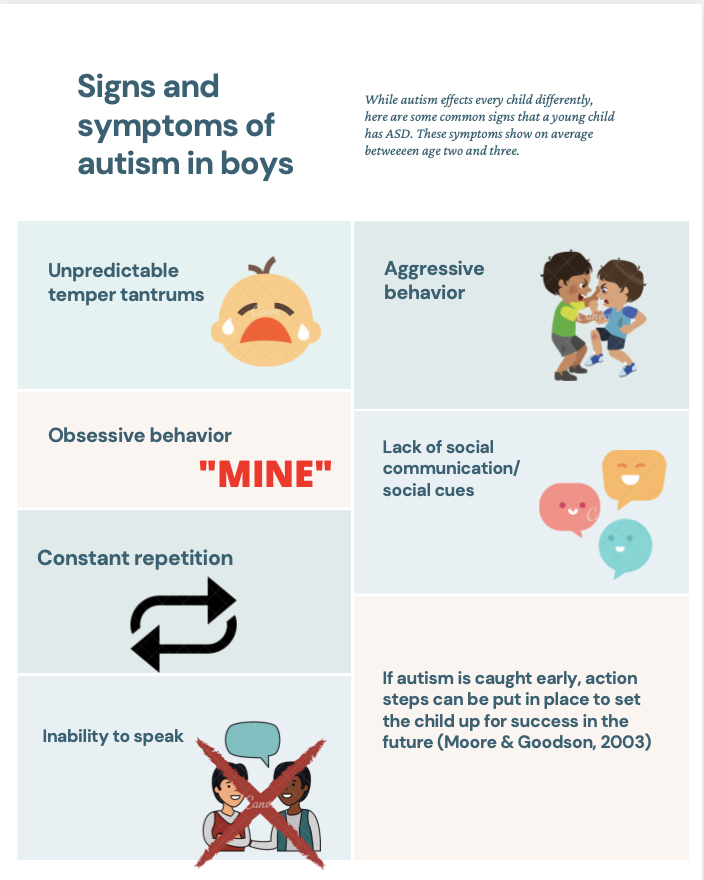Simple steps Autism Behavioral Therapy reduce anxiety
Simple steps Autism Behavioral Therapy reduce anxiety
Blog Article
Recognizing the Impact of Behavioral Autism on Daily Life and Social Interactions
You may not recognize exactly how deeply behavior autism influences life and social communications. People on the spectrum often navigate a world loaded with communication hurdles and sensory overload. These obstacles can result in disappointment and seclusion, impacting their connections and overall well-being. Understanding these subtleties is vital for cultivating encouraging settings. What techniques can we carry out to create even more significant connections and inclusive spaces? The responses could surprise you.
Defining Behavioral Autism and Its Characteristics
Behavior autism, usually referred to as autism range condition (ASD), includes a series of problems identified by obstacles in social interaction, interaction, and repetitive behaviors. You may see that individuals with ASD usually have a hard time to analyze social hints, which can cause misunderstandings in conversations. They may discover it difficult to establish eye get in touch with or participate in tiny talk, making social situations really feel frustrating.
Interaction problems can manifest in numerous methods, from postponed speech development to a preference for using less words. By identifying these qualities, you can promote an environment that advertises acceptance and urges reliable communication, aiding people with autism flourish in their everyday interactions.
The Range of Autism: Recognizing Variability in Behavior
Autism spectrum disorder (ASD) isn't a one-size-fits-all medical diagnosis; it varies widely among people. You may observe that some people with ASD exhibit mild signs, while others might encounter a lot more substantial challenges. This irregularity can show up in actions, interests, and sensory level of sensitivities. You might experience people that are extremely spoken and involve easily in conversations, while others may like singular activities or connect non-verbally.
Furthermore, the means people with ASD respond to sensory input can differ considerably; some could be bewildered by bright lights or loud sounds, whereas others grow in stimulating atmospheres. The range likewise includes distinctions in social communications; some people may have a hard time to analyze social cues, while others navigate social settings with family member ease. Comprehending this variability is crucial, as it helps you value each individual's special experience and dressmaker support to their details requirements, cultivating a more inclusive environment for everyone.
Communication Difficulties Encountered by People With Autism
When you engage with individuals on the autism range, you might notice their one-of-a-kind interaction difficulties. They frequently face troubles with both verbal and nonverbal cues, which can affect their social interactions. Understanding these obstacles is vital for promoting much better links and assistance.

Verbal Interaction Difficulties
Many people on the autism range experience spoken communication troubles that can substantially impact their daily interactions. Your pace, quantity, or tone might not line up with social expectations, causing others to misinterpret your intentions. Acknowledging these challenges can help you and your support network develop strategies to enhance communication and cultivate far better connections with others in your day-to-day life.
Nonverbal Interaction Obstacles
Spoken interaction isn't the only difficulty individuals on the autism range face; nonverbal interaction barriers can be simply as substantial. These challenges can lead to misconceptions or misinterpretations of social cues, making interactions really feel confusing or frustrating. By dealing with nonverbal interaction, you can locate methods to improve your social experiences and boost your total high quality of life.
Social Interaction Influences
Social interactions can typically really feel frustrating due to the one-of-a-kind communication obstacles faced by people with autism. Identifying these obstacles can help you discover strategies to improve interaction, such as practicing social skills in safe settings or utilizing visual aids. Understanding your demands permits you to navigate social communications with higher confidence and ease.
Social Interaction and Connection Building in Autism
While structure partnerships can be challenging for people with autism, recognizing their one-of-a-kind perspectives and communication designs can promote purposeful connections. You might discover that several people on the range prefer direct communication and might struggle with social hints or small talk. By being simple in your interactions, you can aid produce an atmosphere where they feel comfortable.
Take the time to best site pay attention and observe just how they share themselves. This understanding can direct you in steering discussions much more effectively. Participating in shared interests can additionally work as a bridge to much deeper links. Whether it's a leisure activity, a favorite show, or a mutual enthusiasm, these common threads can open up doors to friendship.
Life Routine: Navigating Challenges and Strategies
Steering life regimens can be especially challenging for people with autism, particularly when unforeseen changes occur. You may locate comfort in having a structured routine, as it assists you expect what's next. It's normal to feel distressed or overloaded when disturbances occur. To navigate these challenges, think about executing visual timetables or lists. These devices can give clearness and peace of mind.
Developing a routine that consists of sensory breaks can also be advantageous. This aids produce an understanding atmosphere.
Finally, practice mindfulness techniques to handle stress and anxiety and anxiety. Simple breathing exercises or basing methods can make a significant difference. By integrating these approaches, you can boost your everyday routine and lessen disruptions, making life feel much more workable.
Strengths and Capabilities of People on the Autism Range
Recognizing every day life regimens is simply one element of the autism experience. Several people on the autism spectrum have remarkable toughness and abilities that establish them apart. You might discover that your interest to detail is outstanding, enabling you to master tasks that call for precision and emphasis. Your capability to think outside the box can lead to ingenious remedies in various scenarios.
In addition, your memory abilities frequently beam, specifically in locations of passion. Autism Spectrum Therapies. This propensity for keeping information can make you a beneficial resource in fields like science, art, or innovation. You might also exhibit strong aesthetic reasoning, allowing you to imagine intricate ideas and resolve problems creatively
In addition, your special perspective on the world can foster empathy and understanding in others, enhancing social interactions. Accepting these strengths not just improves your self-confidence however likewise aids others value the varied abilities you offer the table.
Developing Inclusive Environments for People With Autism
Developing comprehensive environments for individuals with autism starts with creating sensory-friendly rooms that satisfy their unique requirements. You can also cultivate chances for social communication, helping to build relationships and links. By making these modifications, you'll contribute to a more welcoming ambience for everyone.
Designing Sensory-Friendly Spaces
While making sensory-friendly spaces, it's important to review the unique needs of people with autism. Beginning by selecting soothing colors and soft illumination to create a calming setting. Integrate quiet areas where people can retreat and reenergize when bewildered. You'll wish to lessen loud noises and interruptions, utilizing soundproof materials or white sound equipments to assist keep tranquility. Consider tactile components like soft fabrics or fidget-friendly things that can provide comfort. Establish that spaces are flexible, enabling simple rearrangement to accommodate different tasks. Consist of aesthetic routines or clear signs to aid people browse the space with confidence. By thoughtfully integrating these components, you can develop hop over to here a welcoming environment that sustains sensory needs and advertises overall health.
Promoting Social Communication Opportunities
Creating sensory-friendly areas not just addresses private convenience yet likewise sets the phase for meaningful social interactions among people with autism. To advertise these interactions, create inclusive environments that welcome participation. Arrange organized activities, like art classes or team games, that urge cooperation without overwhelming sensory input. Usage aesthetic aids and clear interaction click this site to assist every person involve conveniently. Motivate peer mentoring, matching people with autism with supportive peers that can guide them through social scenarios. Additionally, consider hosting regular area events that celebrate neurodiversity, promoting approval and understanding among all participants. By implementing these approaches, you can improve social chances, aiding people with autism develop relationships and enhance their social abilities in a safe, inviting setting.

Frequently Asked Questions
Just How Can Pals Support Somebody With Behavioral Autism?
You can sustain a pal with behavioral autism by being individual, paying attention actively, and appreciating their limits. Participate in tasks they delight in, connect freely, and develop a comfortable environment where they really feel valued and comprehended.
What Resources Are Readily Available for Moms And Dads of Kid With Autism?
You can discover different sources for moms and dads of children with autism, consisting of support teams, academic web sites, and neighborhood social work. Getting in touch with various other parents can likewise offer useful understandings and shared experiences to aid navigate difficulties.
Can Behavioral Autism Modification With Time?

Yes, behavioral autism can alter with time. You might see shifts in communication, social skills, and behavior as your youngster grows. Early intervention and support commonly play crucial roles in these developing adjustments.
Just How Do Sensory Sensitivities Influence Life?
Sensory level of sensitivities can make daily experiences frustrating. You may battle with intense lights or loud noises, causing stress or avoidance. Discovering settings that suit your demands can significantly enhance your convenience and total life.
What Are Usual Misconceptions Concerning Behavioral Autism?
You may assume behavioral autism only impacts interaction skills, but it's more complicated. Several think individuals lack compassion or knowledge, which isn't true. Comprehending these misunderstandings assists foster acceptance and support for those on the range.
Behavioral autism, often referred to as autism spectrum problem (ASD), includes a variety of conditions identified by challenges in social interaction, interaction, and recurring behaviors.Social interactions can usually feel overwhelming due to the distinct interaction difficulties faced by individuals with autism.Designing sensory-friendly areas not just addresses private comfort however likewise sets the phase for meaningful social interactions amongst people with autism. Encourage peer mentoring, coupling individuals with autism with supportive peers that can direct them through social circumstances. By carrying out these techniques, you can enhance social possibilities, assisting individuals with autism build relationships and strengthen their social abilities in a risk-free, welcoming atmosphere.
Report this page